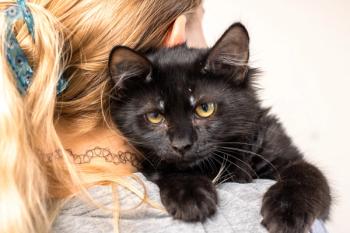
Experts urge late-stage equine ultrasounds to avoid foaling complications
Conducting late-gestation ultrasounds on pregnant mares can spot foal malpresentation and placentitis, UC Davis specialists say.
Veterinarians with equine-owning clients should urge late-gestation ultrasounds for pregnant mares. At the University of California, Davis (UC Davis) Equine Reproduction Service, specialists are reinforcing the message as foaling season approaches.
After pregnancy is confirmed in a mare early in gestation, veterinarians typically conduct a follow-up recheck shortly afterward to confirm embryo or fetal viability, but additional examinations are often skipped until birth. “In many cases, no further examinations are performed until foaling,” Catherine Renaudin, DVM, DECAR, chief of the Equine Reproduction Service at the William R. Pritchard Veterinary Medical Teaching Hospital (VMTH), said in a UC Davis report.1 “However, additional ultrasound examinations later in pregnancy are strongly recommended to improve pregnancy outcomes and reduce the risk of complications for both mare and foal.”
Ultrasounds later in pregnancy can help ensure the foal is in a normal position and act as a screening tool for placentitis—an inflammation of the placenta that can lead to late-term abortion, stillbirth, or premature birth. The process—a transrectal ultrasound—can be brief and non-invasive, while offering valuable information, says UC Davis.
A fetus will typically settle into its final presentation between 9 and 11 months of gestation. By identifying the fetal head or eye, an ultrasound can reveal if the foal is in a normal anterior presentation, with its head first, or if it is in an abnormal position.
Veterinarians may detect the foal’s tail, thighs, or spine during the ultrasound if the fetus is in an abnormal position, such as posterior (hindquarters first) or transverse (sideways). According to UC Davis, fetal malpresentation is not common, but when it does occur, it can lead to a difficult birth, called dystocia, which can put the mare and foal at risk.
According to the American College of Veterinary Surgeons, dystocia is a true equine emergency that requires immediate intervention for improved outcomes for the mare and foal.2 Complications mares may experience associated with dystocia include injury, recovering from anesthesia, a retained placenta, uterine tear, periparturient hemorrhage, and cervical tear. Foals, meanwhile, may suffer from fractured ribs, be born as a “dummy foal,” or sustain other injuries from foaling.2
“Early detection allows [veterinarians] to plan appropriately—such having the mare foal out at the VMTH or another facility equipped for assisted delivery or cesarean section—thereby reducing the risks associated with abnormal foaling,” Renaudin said.1
In addition to helping detect malpresentation, late gestation ultrasounds can also screen for placentitis, which is the top cause of infectious abortion in mares.1 The condition, according to UC Davis, tends to develop close to the cervix, allowing veterinarians to detect it through a transrectal ultrasound. Mares with placentitis may exhibit thickening of the placenta or partial separation of the placenta from the uterus in the early stages.
“UC Davis recommends monthly placentitis screenings beginning at 7 months of gestation through to foaling. If abnormalities are detected, treatment can be started early, significantly improving the chances of a successful pregnancy and reducing the risk of abortion,” wrote the university.1
Conducting late-gestation ultrasound exams can help veterinarians identify problems sooner, allowing them to take proactive steps to maintain the health and wellbeing of both the mare and foal, Renaudin concluded.
References
- Warren R. Equine Reproduction Specialists Urge Late Gestation Ultrasound Exams. University of California, Davis College of Veterinary Medicine. October 22, 2025. Accessed October 28, 2025. https://www.vetmed.ucdavis.edu/news/equine-reproduction-specialists-urge-late-gestation-ultrasound-exams
- Dystocia in Horses. American College of Veterinary Surgeons. Accessed October 28, 2025. https://www.acvs.org/large-animal/dystocia-in-horses/#:~:text=Dystocia%20is%20when%20natural%20delivery,narrowing%20of%20the%20birth%20canal.
Newsletter
From exam room tips to practice management insights, get trusted veterinary news delivered straight to your inbox—subscribe to dvm360.






